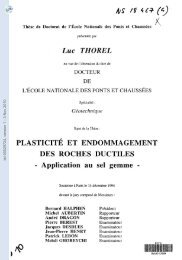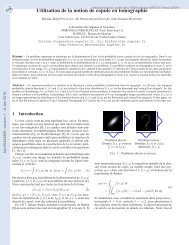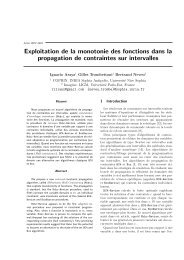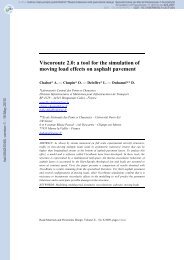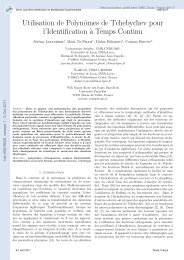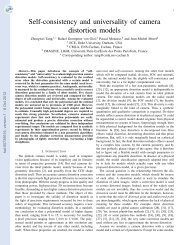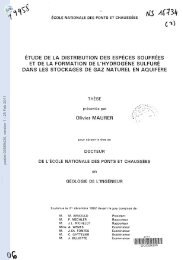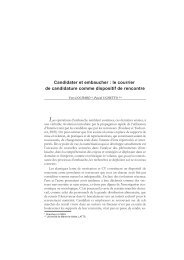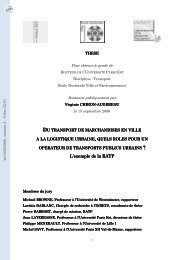MULTIVARIATE POLYNOMIALS IN SAGE
MULTIVARIATE POLYNOMIALS IN SAGE
MULTIVARIATE POLYNOMIALS IN SAGE
Create successful ePaper yourself
Turn your PDF publications into a flip-book with our unique Google optimized e-Paper software.
MULTIVARIABLE <strong>POLYNOMIALS</strong> <strong>IN</strong> <strong>SAGE</strong> 5<br />
bases of the Laurent polynomials of (x 1 , . . . , x n ), i.e., with both positive and negative<br />
exponents.<br />
hal-00824143, version 1 - 21 May 2013<br />
3. Software description<br />
3.1. Installation process. Our software has been developed as a part of the Sage<br />
project. Nevertheless, as it is still in test mode, at the publication time of this paper,<br />
it is not yet available on the main Sage distribution, but one can use it within the<br />
Sage-Combinat distribution.<br />
Step 1<br />
If Sage is not already installed on a computer, please follow the instructions on the<br />
Sage website [6] to get the installation process corresponding to your system.<br />
To get the latest version of our program, make sure you have the last version of Sage<br />
installed. You can upgrade your Sage version by running the following command inside<br />
your sage directory:<br />
./ sage - upgrade<br />
The examples below work with Sage 4.7 and later versions.<br />
Step 2<br />
Install Sage-Combinat [5] by running the following command inside the sage directory:<br />
./ sage - combinat install<br />
If you encounter problems, you find more information by visiting the Sage-Combinat<br />
website [5].<br />
3.2. Define a polynomial. Sage programming is object-oriented. The object containing<br />
the main software methods is called AbstractPolynomialRing. One first needs<br />
to create this object:<br />
sage : A = AbstractPolynomialRing (QQ)<br />
sage : A<br />
The abstract ring of multivariate polynomials on x over Rational<br />
Field<br />
Here, A represents the abstract algebra. To create an actual polynomial, we need a<br />
concrete basis.<br />
sage : m = A. monomial _ basis (); m<br />
The ring of multivariate polynomials on x over Rational Field on<br />
the monomial basis<br />
m is a concrete basis and we shall use it to create polynomials. Both of the syntaxes<br />
presented below can be used.<br />
sage : pol = m [1 ,1 ,2] + m [2 ,3]; pol<br />
x[1 , 1, 2] + x[2 , 3, 0]<br />
sage : pol = m ([1 ,1 ,2]) + m ([2 ,3]) ; pol<br />
x[1 , 1, 2] + x[2 , 3, 0]



